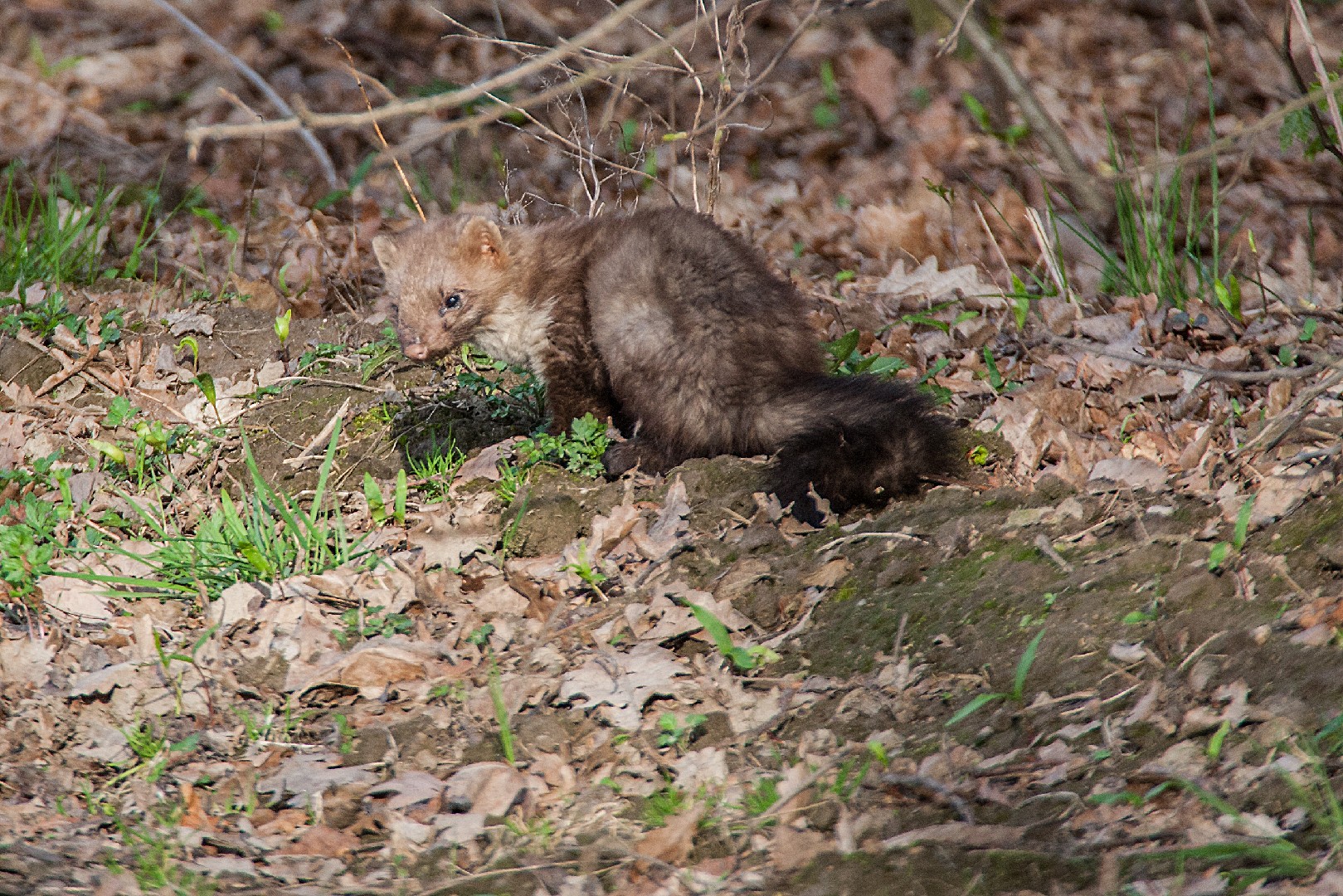Beech marten
A species of Martens, Also known as House marten, Central asian stone marten Scientific name : Martes foina Genus : Martens
Beech marten, A species of Martens
Also known as:
House marten, Central asian stone marten
Scientific name: Martes foina
Genus: Martens
Content
Description General Info
 Photo By Jerzystrzelecki , used under CC-BY-3.0 /Cropped and compressed from original
Photo By Jerzystrzelecki , used under CC-BY-3.0 /Cropped and compressed from original Description
The beech marten is superficially similar to the pine marten, but has a somewhat longer tail, a more elongated and angular head and has shorter, more rounded and widely spaced ears. Its nose is also of a light peach or grey colour, whereas that of the pine marten is dark black or greyish-black. Its feet are not as densely furred as those of the pine marten, thus making them look less broad, with the paw pads remaining visible even in winter. Because of its shorter limbs, the beech marten's manner of locomotion differs from that of the pine marten; the beech marten moves by creeping in a polecat-like manner, whereas the pine marten and sable move by bounds. The weight load per 1 cm2 of the supporting surface of the beech marten's foot (30.9 gm) is double that of the pine marten (15.2 gm), thus it is obliged to avoid snowy regions. Its skull is similar to that of the pine marten, but differs in its shorter facial region, more convex profile, its larger carnassials and smaller molars. The beech marten's penis is larger than the pine marten's, with the bacula of young beech martens often outsizing those of old pine martens. Males measure 430–590 mm in body length, while females measure 380–470 mm. The tail measures 250–320 mm in males and 230–275 mm in females. Males weigh 1.7–1.8 kg in winter and 2–2.1 kg in summer, while females weigh 1.1–1.3 kg in winter and 1.4–1.5 kg in summer. The beech marten's fur is coarser than the pine marten's, with elastic guard hairs and less dense underfur. Its summer coat is short, sparse and coarse, and the tail is sparsely furred. The colour tone is lighter than the pine marten's. Unlike the pine marten, its underfur is whitish, rather than greyish. The tail is dark-brown, while the back is darker than that of the pine marten. The throat patch of the beech marten is always white. The patch is large and generally has two projections extending backwards to the base of the forelegs and upward on the legs. The dark colour of the belly juts out between the forelegs as a line into the white colour of the chest and sometimes into the neck. In the pine marten, by contrast, the white colour between the forelegs juts backwards as a protrusion into the belly colour. 
General Info
Lifespan
10-15 years
Diet
Beech marten's primary food source is small mammals, particularly voles and mice. This omnivore also supplements its diet with birds, reptiles, fruits, insects, and occasionally carrion.
Appearance
Beech marten is a small, cylindrical carnivore, much like a sleek elongated cat. Primarily nocturnal and resembling a weasel in body shape, they have dense, soft fur that predominantly holds shades of ash grey, with subtle patches of white on the throat. Females are slightly smaller than males, but without significant visual differences. They have bushy, tapering tails which are often as long as their bodies.
Behavior
Beech marten is predominantly nocturnal, with solitary tendencies marked by wide-ranging terrestrial foraging and arboreal travels. This species often nests in natural cavities or abandoned burrows. Territorial aggression is a key survival behavior, often linked to food scarcity. Remarkably, it employs an effective blend of physical robustness and stealth in hunting and evasion from predators.
Population
Stable